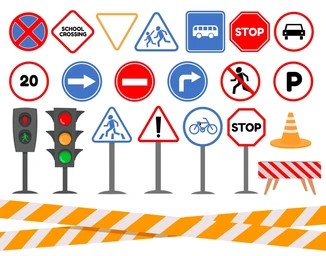Contact Us
RoadVision AI
Private Limited
Office No. 308 & 310, B Block
Ansal Chamber - 1, Bhikaji Cama Place,
Near Engineers India Limited (EIL) Bhawan, New Delhi - 110066
© 2024 | RoadVision AI | All rights reserved
The IRC Code 69-1977 establishes detailed guidelines for designing and implementing road signage in India. Proper road signage is vital for ensuring safe and efficient movement of vehicles and pedestrians. This code, published by the Indian Roads Congress, standardizes the dimensions, colors, and placement of road signs to ensure uniformity across the country.
In this blog, we explore the key provisions, importance, and implementation challenges associated with IRC Code 69-1977.

IRC Code 69-1977 serves as a comprehensive guide for road signage systems in India. It aims to improve road safety by ensuring that all signs are easily understandable, strategically placed, and consistent across different regions. The code covers everything from traffic regulatory signs to warning and informatory signs, emphasizing clarity and visibility for drivers.
The code divides road signs into three main categories:
The IRC Code prescribes standardized designs for road signs, including:
Correct placement of road signs is crucial for their effectiveness. The code specifies:
To retain the functionality of road signs, the code emphasizes:
By providing clear and uniform signage, the code reduces confusion, minimizes accidents, and ensures safer travel for all road users.
Standardized signs improve traffic flow by clearly indicating rules, directions, and potential hazards, especially at intersections and critical zones.
The code ensures that road users can rely on consistent signage, regardless of location, facilitating better navigation and reducing ambiguity.
By adhering to the guidelines, authorities can effectively enforce traffic rules and penalize violations, promoting a culture of compliance.
Despite its importance, implementing IRC Code 69-1977 faces several challenges:
The IRC Code 69-1977 plays a pivotal role in ensuring road safety and efficient traffic management in India. By standardizing the design, placement, and maintenance of road signs, it provides a reliable framework for road infrastructure development. However, its full potential can only be realized through proper implementation, public awareness, and consistent maintenance. Road signage, guided by this code, is not just a regulatory measure but a vital component of safer and more organized road networks.
RoadVision AI is revolutionizing road infrastructure development and maintenance by leveraging cutting-edge AI in road safety and computer vision technology. Through advanced digital twin technology, the platform performs comprehensive road safety audits, enabling early detection of potholes, cracks, and other surface issues, ensuring timely repairs and improved road conditions. It also enhances traffic surveys by providing data-driven insights to address challenges like traffic congestion and optimize road usage. With a focus on building smart roads, RoadVision AI ensures full compliance with IRC Codes, empowering engineers and stakeholders to reduce costs, minimize risks, and improve the overall road safety and transportation experience.